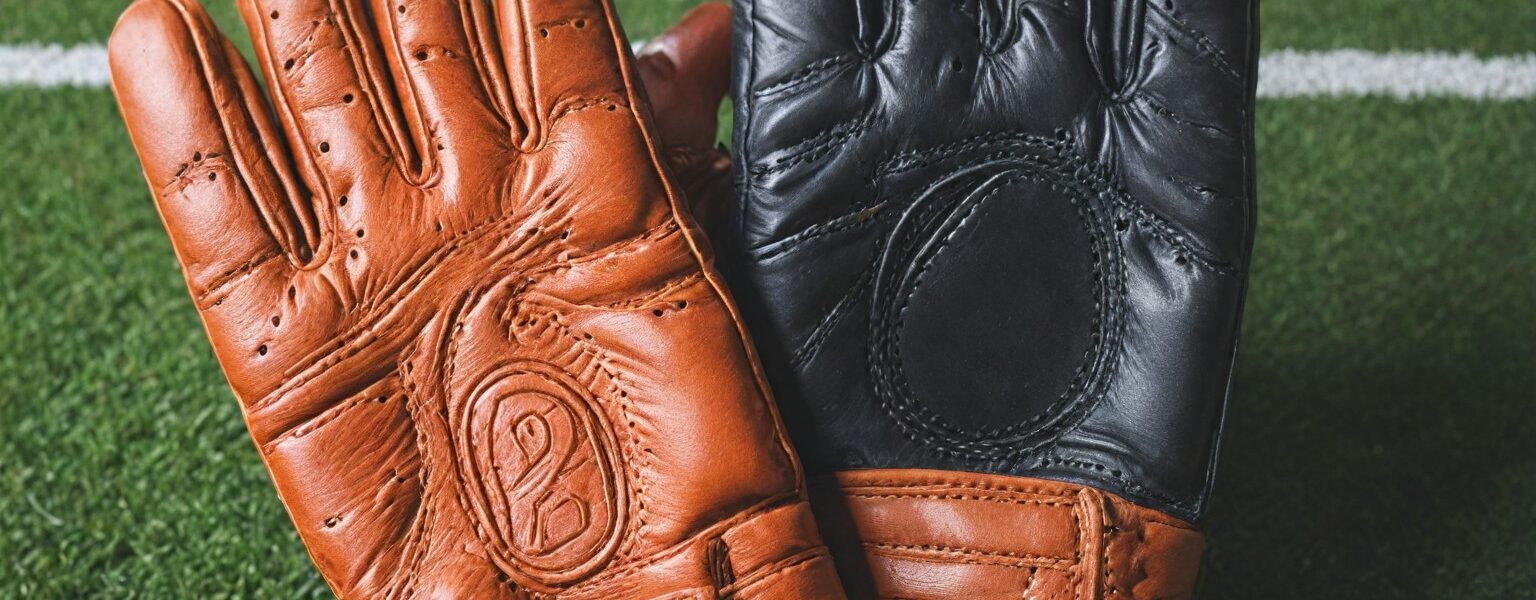Football gloves are essential equipment for players looking to enhance their performance and protect their hands. Whether you’re a seasoned pro or just starting out, understanding the features and benefits of football gloves can make a significant difference on the field. This guide will walk you through everything you need to know about football gloves, from their types and benefits to how to choose the right pair for you.
What Are Football Gloves?
Football gloves are specialized gear designed to improve grip, provide protection, and enhance overall performance for players. They are worn by both offensive and defensive players, each with specific features tailored to their needs.
Types of Football Gloves
- Receiver Gloves
Receiver gloves are designed for players who need excellent grip and ball control. They typically have a sticky palm surface to help catch and hold onto the ball, even in challenging weather conditions. - Linemen Gloves
Linemen gloves are built for durability and protection. They offer extra padding and reinforcement to shield hands and fingers from impacts and abrasions during scrims and tackles. - Quarterback Gloves
Quarterback gloves provide a balance between grip and dexterity. They often have a more flexible design to allow for better ball handling and throwing accuracy. - Special Teams Gloves
These gloves are versatile and often include features from both receiver and linemen gloves, catering to the varied needs of players involved in kicking, punting, and covering kicks.
Benefits of Wearing Football Gloves
- Enhanced Grip
One of the primary benefits of football gloves is the improved grip on the ball. The sticky material on the palm helps players catch and hold onto the ball more securely, which is crucial for receivers and quarterbacks. - Protection
Football gloves offer protection against injuries such as cuts, abrasions, and bruises. The padding and reinforced areas help shield hands and fingers from impacts during tackles or falls. - Weather Resistance
High-quality football gloves are designed to perform well in various weather conditions. Whether it’s raining or snowing, gloves with good moisture management can help maintain grip and performance. - Comfort and Support
Modern football gloves are made with materials that provide a snug fit and comfort. They often include features like adjustable straps and breathable fabrics to ensure a secure and comfortable fit throughout the game.
How to Choose the Right Football Gloves
Selecting the right football gloves involves considering several factors:
- Size and Fit
Ensure the gloves fit snugly but comfortably. They should not be too tight or too loose. Measure your hand and refer to the manufacturer’s sizing chart for the best fit. - Material
Look for gloves made from high-quality materials such as synthetic leather, mesh, and rubber. These materials offer durability, flexibility, and excellent grip. - Padding and Protection
Choose gloves with adequate padding if you need extra protection. For linemen, thicker padding is essential, while receivers may prefer lighter padding for better dexterity. - Grip Technology
Different gloves feature various grip technologies. Check for gloves with advanced grip patterns or materials designed to enhance ball control and handling. - Style and Design
While performance is key, style and design can also play a role. Choose gloves that match your team’s colors or personal preferences, as long as they meet your functional needs.
Care and maintenance of football gloves
Proper care and maintenance can extend the lifespan of your football gloves.
- Cleaning
Follow the manufacturer’s cleaning instructions. Most gloves can be hand-washed with mild soap and water. Avoid using harsh detergents or machine washing, as it can damage the material. - Drying
Air-dry your gloves after washing. Do not use a dryer or direct heat sources, as they can warp or shrink the gloves. - Storage
Store your gloves in a cool, dry place to prevent damage. Avoid exposing them to excessive moisture or heat.




